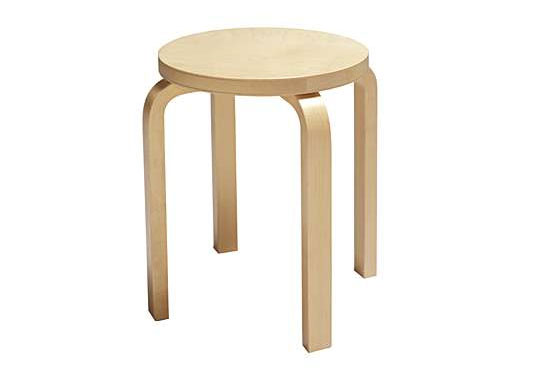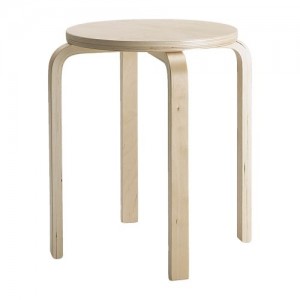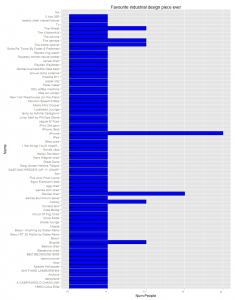lack
The warmup homework for my new course is to think about a product that I really like, and to think in terms of what needs of mine it meets. We did an exercise in class to think through the needs, features and benefits for a customer, and it showed us all up as pretty feature biased, so I’m going to try to get this to be more needs based.
I ended up going on a pretty major tangent, so here’s the tl:dr.
The product that I’m picking for this exercise is the Ikea Lack side table. Let me go off on a bit of a tangent and then I’ll come back to my specific needs that this table fulfils.
A while ago I polled the office for a whole bunch of things, one of which was their favourite ever industrial design piece. Click on the chart to see it bigger. One thing sticks out immediately, there is a really strong bias towards expensive, exclusive items that most people won’t ever be able to own. There are a few clever gems in there; like ‘chopsticks’ and ‘the bottle’. But it seems that in general designery (in architecture and interior design at least) types define quality of design on a pretty limited set of fitness dimensions. Ones that don’t contain a particularly strong weighting on very much except looks, and particularly strongly weighted towards (unconsciously I think) what, as someone who also likes it, that piece signals about them.**
**
A pretty good example of this is the Artek stool vs the Ikea Frösta stool. To the untrained eye they look identical, especially if they are in different locations. But those in the in-group can spot the genuine article without having to turn it over to look for the “Genuine Artek” sticker underneath. Without getting into an ethical discussion about the value of originality in design at the moment1, it is interesting to see how rabidly obsessive people are of the ‘iconic’ item and how dismissive they are about the “knock-off”. This seems to me to be a pretty clear indicator that they are taking a lot more into account than just the ability to rest their arse on something while they do something else.
There are differences in the stools; the Artek stool is more sturdily built and will last a bit longer, but the Ikea one is a tenth of the price.


What I take from this polling exercise is that when people are asked to tell their favourite piece of industrial design they are evaluating this decision from a signalling point of view, even though the question was asked anonymously. “What does liking this thing tell other people about what kind of person I am?”
Talking this through this morning we got to the conclusion that we could think of 3 components to a product decision: Signalling, secret pleasure and function.
Function is straightforward, but it’s probably often not a very significant portion of why you’d buy something. Products that nobody else would ever find out about or that you really don’t care about would have a big portion of function, so something like staples would fit that description quite well.
Secret pleasure is the name we came up with for a differentiator between two products that nobody else could ever know about. This is tricky to think of a good example of, but something like two similarly priced disposable pens would be ok. You like the way one writes better than the other because it suits your style. Where this starts to break down is when other people start to discover your secret pleasure, and whilst you may still love that product because it works for you, there is also a component of signalling to the other pen nerds that you meet that you are a connoisseur of writing instruments, and that this pen is the best despite its low price and that you aren’t swayed by trifles like money!
Signalling has been written about at great length so I won’t bang on about it but I’m also a cynic, and I believe that a far more significant proportion of our behaviour is driven by signalling than most people I meet[Robin Hanson’s Homo Hypocritus theory has had a big effect on my opinions on this ].
I didn’t buy my belt, it was a present, which probably makes me think more favourably about it, but it’s a really nice belt. The functional aspect of it is close to nothing but it is better than a piece of string as a means of holding up my trousers simply because it doesn’t dig in (it’s wider). It feels really nice so I’ve given it a reasonable secret pleasure rating and, as it doesn’t really do anything because my jeans actually hold themselves up, I’ve given the rest over to signalling.2
I don’t really care at all about staples. If they staple stuff - great. They come in pretty cool boxes sometimes, and if they are rusty they look bad (signalling negative things about you) but in general they are there to get a job done. But, if someone told me about some cool thing about staples, maybe about staples made of brass, that would give me secret pleasure in knowing that and would signal to other staple freaks that I’m one of them. (I guess I’ve just come up with marketing again.)
So now I’ve built up this clumsy taxonomy of needs3 I’m in a position to say why I like the Lack table!
It’s almost all signalling, with a little bit of secret pleasure.
I bet you didn’t see that coming, well actually it’s pretty obvious now, but I bet you wouldn’t have expected it to begin with. Seeing as you’ve read this far, here’s my pitch:
The Lack table has been an Ikea stalwart for years. My ex-housemate Neal bought a pair to go either side of his bed [Neal’s room was such a pimp pad even though nobody used ‘pimp’ to mean anything other than a dude who looked after prostitutes.] in our first house when we were just going into second year at uni4. They cost him £20 each I think, and we thought that was a bargain. I bought one recently to put on top of my desk at work to use as a standing desk and it cost me $9.99. So over 15 years, in real terms it costs one sixth of what it did then!
It’s made in a clever way, packaged in a clever way, and assembled in a (fairly) clever way. All of that drives the cost down, rather than up like all the other ‘designer’ products, but also makes it a real pain to assemble and makes it really hard to change the height of the table top. All in all if it has any secret pleasures they are all informational.
It also signals to those who are member of the design cognoscenti that I’m not one of them, because if I was party to their advanced skills in discerning good design from junk I’d be able to tell that the lack table is junk. I’m pretty pleased with this5 because it makes me feel smug. For a while I believed that I had access to secret hidden knowledge that they didn’t, and perhaps that’s true, I still believe that Ikea have done a great job in making a product delivery system that allows them to produce the same thing and reduce its price so drastically, but really I think I like it because it annoys people, and I really like doing that.
So all in all, the need that the lack table fulfils for me are:
- it annoys people who I enjoy annoying
- it makes me feel smug because I feel like I appreciate it on a deeper level (than the people who I enjoy annoying)
- it appeals to the bargain hunter in me
- it gives me a raised surface to put my computer on (this one is a pretty distant last[^6])
-
I’ll be posting a video of Andrew Metcalf talking about originality in design quite soon. ↩
-
these pie charts are totally made up. ↩
-
which I’m sure has been done properly by proper people heaps of times already. ↩
-
That house had about 300 pounds worth of filler in the walls by the time we’d finished painting/vandalising it. ↩
-
I certainly had my fair share of “Eugh, how terrible, you went to Ikea” comments in the office ↩
